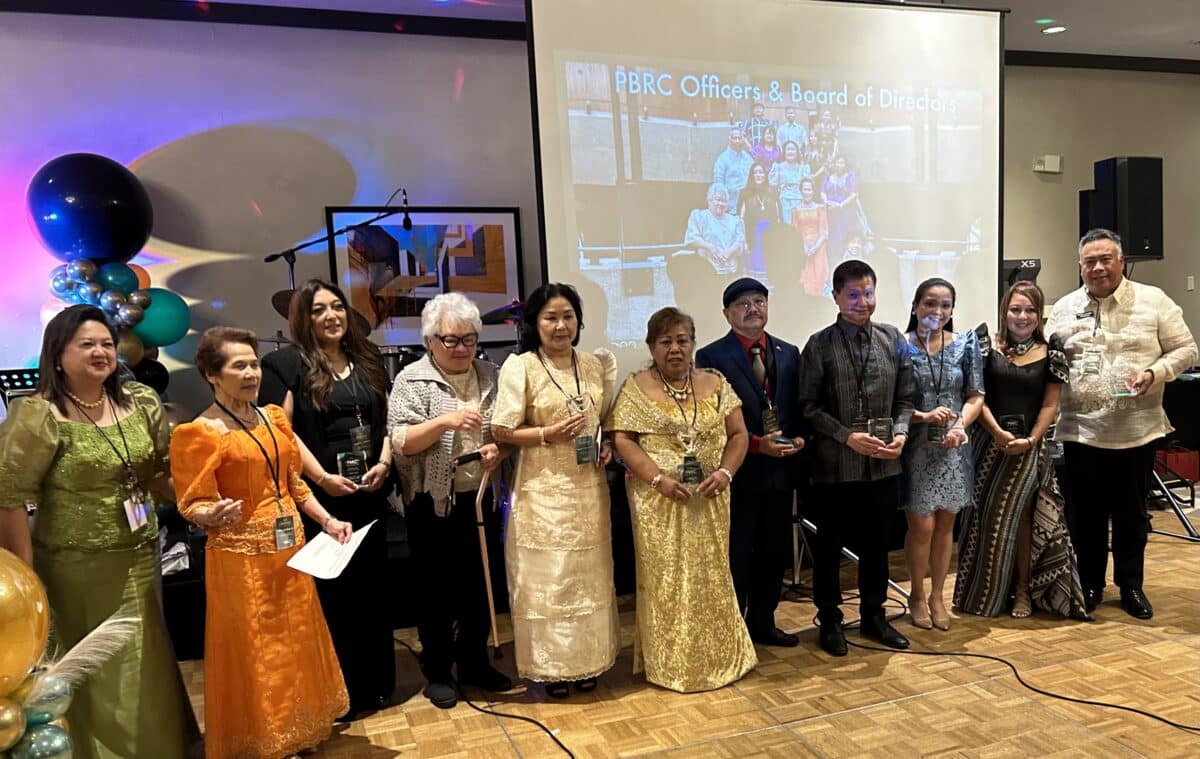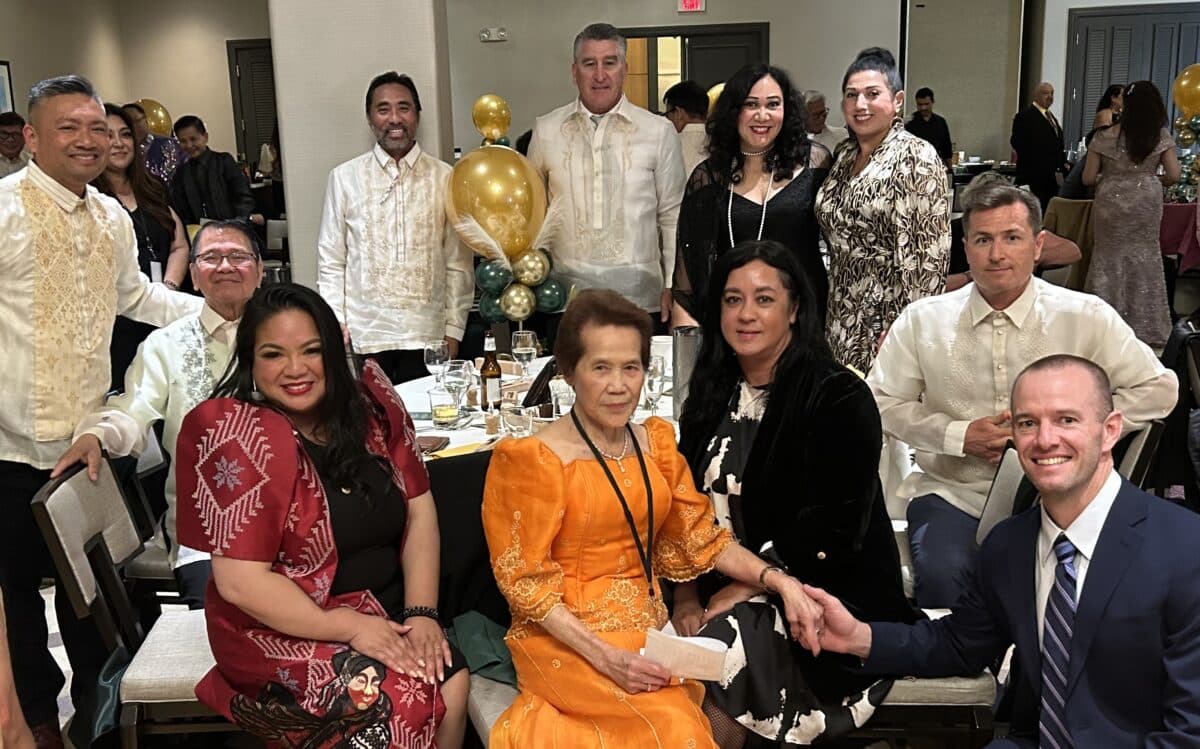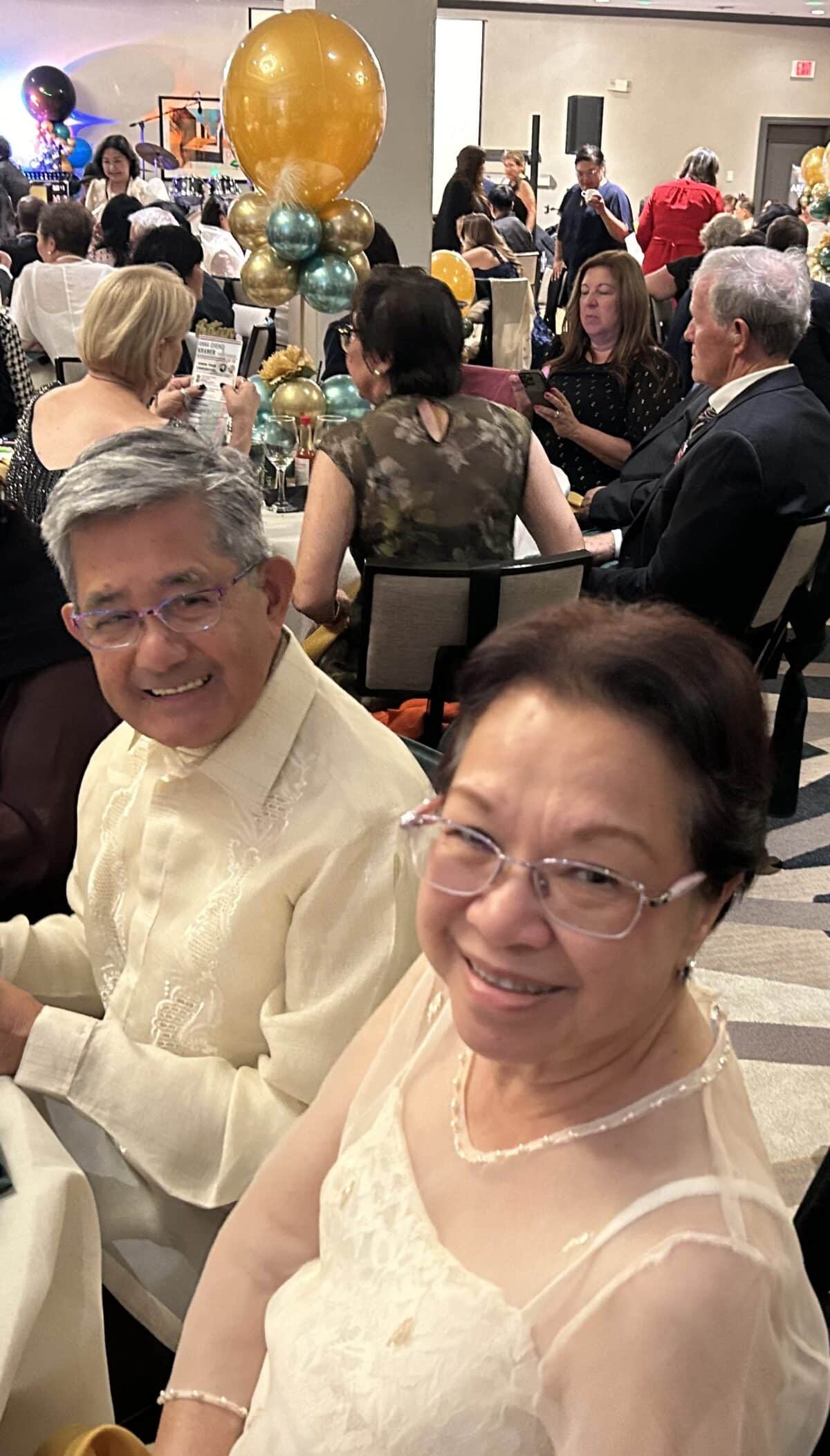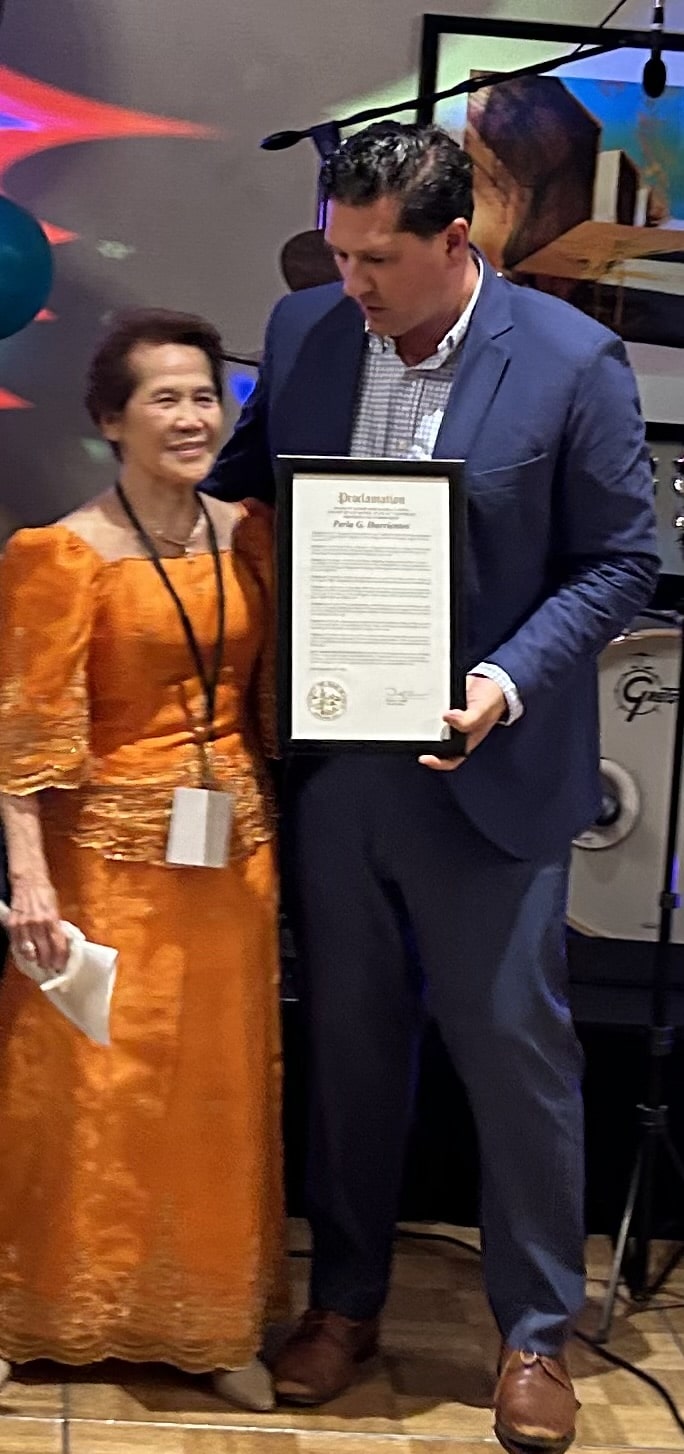Pilipino Bayanihan Resource Center: 35 years of empowering Fil-Ams

In dress and in deed, PBRC Board of Directors pay homage to their heritage, their predecessors and the community they serve. Photo by Cherie M. Querol Moreno
SOUTH SAN FRANCISCO, Calif. – Whether an individual of any background is considering a run for political office, opening a business or seeking assistance for a resident in North San Mateo County, his, her or their first contact is the Pilipino Bayanihan Resource Center.
No surprise there. Filipinos, everyone knows, compose the largest population of color in Daly City. More to the point, the leadership of the county’s northernmost municipality is predominantly Filipino American, reflecting the influence wielded by said community.
Better known by its initials, PBRC is recognized as the barometer of Filipino American social weather because of its robust response to the attitudes and needs, assets and issues of Daly City and vicinity residents.
Little wonder that some 200 folks donned various versions of Filipiniana last weekend at a hotel here to honor PBRC for raising the community’s collective self-esteem through education and engagement for 35 years.
Substance with style
Tradition met innovation as attendees complied with the dress code. The classic two-piece “baro‘t saya” took center stage in the attire of PBRC co-founders, retired pharmacist Perla Ibarrientos and retired college professor Sonia Reyes, and office manager Liza Rebortura. Likewise true to tradition was the “terno” of the butterfly sleeves fame worn by board member Helen Casaclang.
You may like: Fil-Am couple marks 60 years together in love and service
Millennial iterations of the “terno” turned heads, such as Daly City Mayor Juslyn Manalo’s long bolero complete with the de rigueur sleeves from fabric loomed by Mindanao people.

The Daly City leadership attends in full force and Philippine regalia to applaud PBRC, headed by Mayor Juslyn Manalo, Vice Mayor Rod Daus Magbual, City Manager Tom Piccolotti, acting Police Chief Christensen and Lake County Chief Public Defender Ray Buenaventura. Photo by Cherie M. Querol Moreno
“Wearing our culture is more than fashion; it’s also promotion of our heritage,” she explained her outfit designed and crafted by Filipinos living in Europe, saying it reminded of her 2015 visit to Lake Sebu in Cotabato.
PBRC vice president and Serramonte Center executive Marie Villarosa’s geometric-printed stunner came with a wrap-around skirt, while secretary and SF nurse practitioner Monina Pangilinan preferred an embroidered mini or “balintawak,” as the short “terno” is called.
Board member and health service provider Dory Panieza dazzled in her gilt “panuelo” or “alampay” over her gold velvet “maria clara,” the “aristocratic” form of “baro’t saya” reflecting affluence in the days of yore.
San Mateo County Behavioral Health & Recovery Services Director Dr. Jei Africa rocked a classic piña barong while PBRC 2024 President and Santa Clara County department executive Michael Pangilinan went with the jusi variation. PBRC board member and accountant Arsenio del Rosario opted for a modern grey rendering.
Former PBRC board member Jose Antonio, wealth manager at JP Morgan, and adviser Rob Chua, principal-founder of Avenues Consulting, went casual “Americana” minus necktie.

PBRC co-founder Rolly Recio, with wife Tessie Recio, lauds the current crop of leaders fulfilling the organization’s mission. Photo by Cherie M. Querol Moreno
Chua was among recipients of the organization’s awards for outstanding contributions through the years: Chua for helping secure grants for new programs; lawyer Maria Segarra for heading immigration clinics; neighborhood activist Alice Sagaysay for constant volunteerism; Rebortura and Monica Abello for their administrative management.
Current board members led by Becky Ayson and Cheryl Catuar received acknowledgment for supporting fulfillment of the founders’ vision. Special mention went to past board members.
San Mateo County Board of Supervisors Vice President David Canepa capped the awards presentation with effusive commendation for Ibarrientos for her unwavering leadership since PBRC’s inception in 1989.
Ideal timing
Bucking the tide in a fog-defiant three-piece suit for the occasion, PBRC Board Director Ray Satorre detailed recollection of the organization’s beginnings in the late-1980s.
He named Abello, the Bay Area’s first Fil-Am social worker, along with Ibarrientos, Reyes and real estate broker Rolly Recio among a group of Filipinos who attended a training of what was then known as San Mateo Organizing Project.
SMOP comprised “church members of various denominations” and inspired the Fil-Ams to set up their own under the guidance of a Filipino priest.
Called Daly City Organizing project, the team had a promising start, but many of its members shifted focus on personal responsibilities as they were building careers and starting families.
Reyes took over on the prodding of Abello, Satorre said. “With the help of lawyers Amancio “Jojo” Liangco Jr. and Lourdes Tancinco, PBRC was organized and acquired nonprofit status in September 1989,” continued the health service provider.
The timing of the birth of the Filipino American advocacy group was ideal.
Filipinos on both sides of the Pacific were finding their voices and flexing their muscles around that period. Those in the archipelago were demanding accountability from the Marcos government for the 1983 assassination of Senator Benigno S. Aquino Jr. on his return from political exile. Protests throughout the country culminated in 1986 with the Marcos family fleeing to Hawaii.

San Mateo County Board of Supervisors Vice President David Canepa offers highest commendation to Perla Ibarrientos for unwavering dedication to PBRC since inception. Photo by Cherie M. Querol Moreno
Some Filipinos who had sought refuge earlier in this country from political persecution prepared to return to their homeland, while many who had planted roots sent for their partners and children or had married with US-born children. Those who stayed joined predecessors – the descendants of the first and second waves of immigration from the Philippines – in staking claim on their adopted or new homeland.
Back then support systems for Filipinos were spread out in the different enclaves around the Bay. Daly City became home to the surge of newcomers who arrived with the 1986 Immigration Reform and Control Act giving amnesty and a path to naturalization for undocumented people living here before 1980 and had no criminal record.
World War II veterans benefited from the legislation when they were granted naturalization with proof of service, particularly during the years when the US prematurely shut down the consular process and broke the promise of citizenship for Filipinos who had signed up to join the United States Army in the Far East.
Cultural competence and sensitivity were unknown as yet in response to the needs of the burgeoning population. Resources were not quite identified or made accessible.
Satorre emphasized the critical role played by PBRC when he listed its mission and initial programs “to provide direct services to the community, education to Fil-Am youths and their families relating to self-esteem, development, community involvement and leadership through workshops, seminars and forums.”
While empowering the community, the organization carved a niche therein. The team partnered with Asian Youth Alliance to prevent substance abuse and Pilipino Youth Coalition on tobacco smoking prevention. They advocated successfully for the hiring of Filipino American teachers in the Jefferson High School District.
PBRC quelled a potentially volatile situation when an African American student was shot and killed by a Filipino American youth. The organization launched a phone bank to ease the tension between the two populations. Ibarrientos and Recio spearheaded a meeting between key representatives and Recio facilitated an interview of the mother of Eddie Braden, the boy who was slain, by Philippine News to assure the family of support and empathy.
New haven
It would be at least a handful of years later for a Filipino American to be elected in Daly City when voters sent San Francisco lawyer Mike Guingona to the City Council in 1994. By then PBRC was becoming a haven for Filipinos wanting to take ownership of their city, and for non-Filipinos eager to reach the community.
Before becoming Daly City’s second Fil-Am elected City council member, Ray Buenaventura was starting his career as private defender in San Mateo County with an eye on politics. He proved his mettle when he escorted his “Tita Perla” to “negotiate a comeback” with then-City Manager Pat Martel, per Satorre’s report, to 2121 Junipero Serra.
That address was the site the late Council Member Carol Klatt had “paved the way” for use as PBRC offices but had been “earmarked for redevelopment,” forcing the growing team to move out and then seek return.
Ibarrientos’ impassioned plea and Buenaventura’s negotiation skills eventually convinced the City to hand back the key to what became PBRC headquarters from 2005 to 2020.
“Thank you Daly City for those 15 years we paid only $15,” Satorre disclosed their $1 annual rent, a gesture of the city’s appreciation.
For the past four years 200 Northgate Avenue in Daly City has been home to PBRC, another gift from the city that benefits the most from the organization’s community service. No, it’s not rent-free but “it’s more than reasonable,” Ibarrientos told Inquirer.net USA.
The site is definitely an assuring switch from the restaurants they used as meeting rooms or the trunk of early PBRC pioneer Edgar Aguinaldo that doubled as repository for their files as they prepared the logic model for the future organization.
Given the brain trust and the stout hearts within, PBRC predictably will occupy and keep the space alive with activities for several generations to come.

